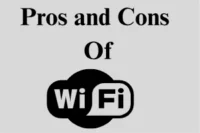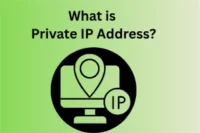Edge Computing vs. Cloud Computing: Complete Comparison
Published: 22 Sep 2025
The demand for fast, reliable, and efficient data processing has grown dramatically with the rise of the Internet of Things (IoT), AI, and real-time applications. Two major paradigms dominate this space: cloud computing and edge computing.
Both offer powerful ways to handle large amounts of data, but they differ in computing architecture, data latency, and how they manage resources.
This article provides a complete comparison of edge computing vs. cloud computing, exploring their benefits, challenges, and use cases. By the end, you’ll know which approach or combination fits your needs best.
What is Cloud Computing?
Cloud computing is the delivery of computing resources such as storage, processing power, and applications over the internet. It relies on centralized infrastructure located in large cloud servers or data centers.
Key Features of Cloud Computing:
The following are the key features that define cloud computing and make it a preferred choice for businesses and developers worldwide.
- Centralized infrastructure for storage and processing
- Virtually unlimited scalability and elasticity
- Cost-effective for large workloads due to economies of scale
- Strong ecosystems of tools and services
Cloud computing works well for heavy data workloads, backups, analytics, and collaboration. However, when applications require real-time analysis or low latency, relying solely on distant servers can be a drawback.
What is Edge Computing?
Edge computing moves distributed processing closer to the source of data. Instead of sending all data to remote data centers, edge devices (like IoT sensors, routers, or gateways) handle part of the workload locally.
Key Features of Edge Computing:
The following are the key features that define edge computing. It is increasingly important for real-time and IoT-driven applications.
- Localized data management for faster response
- Reduced network bandwidth consumption by processing data near the source
- Lower data transfer cost compared to sending all information to the cloud
- Improved data sovereignty and regulatory compliance
Edge computing enables real-time analysis of data streams, making it ideal for autonomous vehicles, industrial IoT, AR/VR, and other latency-sensitive applications.
Core Differences Between Edge and Cloud Computing
The core differences between edge computing and cloud computing lie in how data is processed, stored, and delivered. Understanding these distinctions helps businesses choose the right computing model for their needs.
| Factor | Cloud Computing | Edge Computing |
| Computing Architecture | Centralized | Distributed |
| Latency | Higher (due to distance) | Lower (local processing) |
| Network Bandwidth | Heavy usage for large transfers | Optimized, less traffic |
| Scalability | Virtually unlimited | Limited to device capacity |
| Security & Privacy | Data sent across networks, potential risks | Stronger localized data management, better privacy |
| Data Sovereignty | Data often stored in global servers | Easier compliance with local regulations |
| Data Transfer Cost | Higher (constant uploads to cloud servers) | Reduced (only relevant data sent to cloud) |
Advantages of Cloud Computing
Cloud computing offers several advantages that make it a powerful solution for organizations of all sizes. These benefits range from scalability and cost efficiency to simplified management and global accessibility.
- Scalability — resources can be expanded instantly.
- Centralized infrastructure — easier to manage and update.
- Cost efficiency for storage, backups, and large workloads.
- Access to advanced computing resources like AI training models.
Disadvantages of Cloud Computing
Despite its many strengths, cloud computing also comes with certain limitations. Understanding these disadvantages is essential for making informed technology decisions.
- Data latency — unsuitable for applications needing real-time analysis.
- Data transfer cost — constant uploads can become expensive.
- Security risks and compliance challenges due to centralized storage.
- High network bandwidth demand.
Advantages of Edge Computing
Edge computing brings several advantages that address the limitations of traditional cloud models. Its strengths lie in faster response times, localized data handling, and improved real-time performance.
- Real-time analysis with low latency.
- Saves network bandwidth by filtering unnecessary data locally.
- Supports data sovereignty and localized data management.
- Improves resilience when connectivity to the cloud is unstable.
Disadvantages of Edge Computing
While edge computing offers many benefits, it also has certain drawbacks. Recognizing these disadvantages helps in balancing its use with cloud solutions.
- Limited computing resources compared to large data centers.
- Harder to manage many edge devices (software updates, security patches).
- More complex computing architecture (distributed environment).
- Higher upfront deployment costs in some cases.
Use Cases: When to Choose Cloud or Edge
Best for Cloud Computing:
Cloud computing is ideal for tasks that demand large-scale resources, centralized control, and cost efficiency.
- Big data analytics
- Data backups and recovery
- Enterprise collaboration tools
- Long-term storage in cloud servers
Best for Edge Computing:
Edge computing is best suited for scenarios where speed, real-time insights, and localized data handling are critical.
- Autonomous vehicles needing real-time analysis
- Smart factories and IoT-driven automation
- AR/VR applications requiring ultra-low data latency
- Healthcare devices needing localized data management
Hybrid Approach:
Most businesses adopt a hybrid model. Edge devices handle fast local processing, while the cloud provides scalability, long-term storage, and global analytics.
Technical Considerations
The following technical considerations play a key role in determining whether edge computing, cloud computing, or a hybrid model is the right choice.
- Security and privacy: Cloud must secure large centralized databases, while edge must secure distributed devices.
- Distributed processing: Edge computing allows workload splitting across devices and cloud.
- Network bandwidth: Hybrid solutions optimize traffic by sending only critical insights to the cloud.
- Data sovereignty: Edge ensures compliance by keeping sensitive data local.
Future Trends
The following future trends highlight how edge and cloud computing are evolving and what businesses can expect in the coming years.
- Integration of edge devices with AI chips for smarter local decision-making.
- 5G and 6G networks enabling ultra-low latency connections.
- Hybrid computing architecture is becoming the default in industries like healthcare, transportation, and manufacturing.
- Stronger regulations around data sovereignty and security and privacy compliance.
Conclusion
The debate between edge computing vs. cloud computing isn’t about choosing one over the other, it’s about using both where they fit best.
- Use cloud computing for scalable storage, heavy data workloads, and centralized applications.
- Use edge computing for low-latency, real-time analysis, and local compliance.
- Combine both in a hybrid approach to balance performance, cost, and compliance.
As technology evolves, businesses that embrace the strengths of both models will have a competitive edge.
💬 We’d love to hear your thoughts! Share your opinions or questions about edge vs. cloud computing in the comments below.
FAQs
The following frequently asked questions address common doubts readers may have about edge computing, cloud computing, and how they work together.
Cloud computing uses centralized data centers to process and store data, while edge computing processes data closer to where it is created. Cloud is better for scalability, while edge is better for real-time needs. Many systems use both together.
Edge computing reduces data latency by handling information near the device instead of sending it far to a cloud server. This means responses happen almost instantly. That’s why it’s useful for applications like self-driving cars and AR/VR.
No, edge computing doesn’t replace cloud computing it complements it. Cloud provides scalability and long-term storage, while edge provides speed and local control. A hybrid model usually works best.
Cloud computing offers strong security tools, but data must travel across networks, which increases risk. Edge computing can improve privacy by keeping sensitive data local. However, both require proper security measures.
Examples include smart factories, autonomous vehicles, AR/VR headsets, and connected healthcare devices. These applications need real-time analysis to function effectively. Without edge, latency would make them unreliable.
Cloud computing powers services like Google Drive, Microsoft 365, and Netflix. Businesses also use it for big data analytics, backups, and running large apps. It works best when speed is less critical than storage and scale.
Cloud is usually cheaper for large-scale storage and centralized apps. Edge may save costs on network bandwidth and data transfer by processing locally. The overall cost depends on your workload and scale.
IoT devices generate huge amounts of data that can overwhelm networks. Edge computing lets them process some data locally, reducing the need to send everything to the cloud. This ensures faster responses and better efficiency.
Data sovereignty means keeping data within a country’s legal boundaries. Cloud often stores data globally, which can cause compliance issues. Edge helps by supporting localized data management and meeting regulatory requirements.
Yes, especially if they use IoT devices or need faster services for customers. While cloud is still the main choice for small businesses, edge can improve speed and privacy in certain cases. A mix of both is often the smartest approach.

- Be Respectful
- Stay Relevant
- Stay Positive
- True Feedback
- Encourage Discussion
- Avoid Spamming
- No Fake News
- Don't Copy-Paste
- No Personal Attacks

- Be Respectful
- Stay Relevant
- Stay Positive
- True Feedback
- Encourage Discussion
- Avoid Spamming
- No Fake News
- Don't Copy-Paste
- No Personal Attacks





